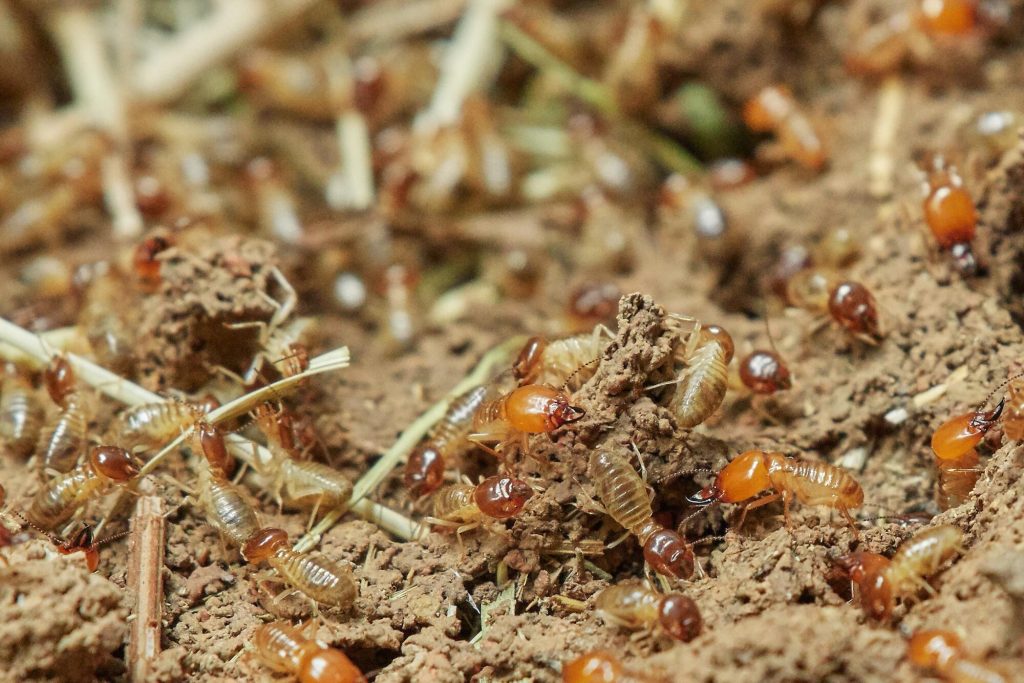When you think of household pests, you might picture ants or spiders. However, one of the most destructive pests lurking in the shadows is the termite. These tiny insects can sneak into homes quietly.
They often cause a lot of damage before homeowners realize it. Understanding how termites behave when invading homes and the clues they leave behind.
Read on to learn more.
What Are Termites and Why Do They Invade Homes?
Termites are social insects that live in colonies. They primarily feed on cellulose, which is found in wood and plant matter. When they invade homes, they are usually in search of food sources. This means that any wooden structures, like floors, walls, and furniture, are at risk.
Signs of Termite Infestation
Termites are notorious for being stealthy. Here are some subtle signs that they might be invading your home:
Wood Damage
Be on the lookout for soft or hollowed-out areas in wooden structures, a common indicator of termite activity. These pesky insects feast on wood from the inside out, leaving behind barely anything except a fragile shell. Imagine a once-sturdy beam now reduced to a weak, crumbling mess. It’s a testament to the termite’s voracious appetite and ability to wreak havoc on our homes and buildings.
Frass
Termite droppings, sometimes referred to as frass, frequently gather close to the termite colony and resemble sawdust or tiny pellets. Imagine a tiny, dusty pile strewn under a plywood floor or around the base of a wooden beam. Termites have been active, as seen by this, and their feces is a blatant sign of their presence.
Swarmers
During certain seasons, typically in spring or autumn, termite colonies reproduce and send out swarmers with wings. These flying insects are searching for new places to establish colonies, and if you find them indoors, it’s a stark warning that you might have an infestation. Imagine a swarm of dark, winged creatures fluttering around a window or doorframe, a disturbing sight that signals a potential problem.
Mud Tubes
Termites construct mud tubes to travel from their nests to their food source, often building these narrow, earthen passageways along walls or foundations. Spotting these tubes is a dead giveaway of termite activity. Picture a network of small, winding tunnels made from dirt and saliva, eerily resembling a miniature highway system.
Why Homeowners Overlook Termite Clues
One reason many homeowners miss these signs is that they may look for more obvious problems like leaks or mold. Since termite damage can be hidden behind walls or underneath floors, it often goes unnoticed. Furthermore, some signs may require careful inspection to identify, and not all homeowners are aware of what to look for.
Taking Action Before Major Damage Occurs
Being proactive is key when it comes to termite prevention. Regular maintenance around your home can significantly reduce the risk of infestations. Here are some effective strategies:
Maintain Your Yard
Don’t let overgrown branches and plants become a welcome mat for termites. Keeping them at least 3 feet away from your home’s foundation reduces the chance of these unwanted guests tunneling into your walls. Think of it like keeping a clean perimeter around your castle, it’s a crucial line of defense.
Seal Cracks
Your home’s exterior is like a fortress, and cracks and crevices are vulnerable entry points for termites. Regularly inspect your home’s exterior, paying close attention to areas around windows, doors, and pipes. Seal these openings with caulk or weatherstripping to prevent termites from squeezing inside.
Store Wood Properly
Firewood is like a termite magnet, attracting them to your home. To avoid this, store your firewood at least 20 feet away from your home and elevate it off the ground using a rack or platform. This breaks the termite highway, making it harder for them to march towards your home.
Importance of Regular Termite Inspections
To catch a termite problem early, many homeowners choose to schedule regular Termite Inspection. These inspections are crucial, especially in areas prone to termite activity. During an inspection, a professional will look for signs of infestation and evaluate the overall health of your home against termite damage.
What to Expect During a Termite Inspection
When you call in a professional for a termite inspection, they will assess both the interior and exterior of your home. They will examine wooden structures, check for mud tubes, and look for any signs of frass. Even your yard can be part of the inspection, as the professional will check for potential nests or shelters.
Responding to a Termite Infestation
If your home does experience a termite infestation, acting quickly is essential. Treatments include:
Liquid Treatments
Imagine a protective shield around your home, preventing termites from invading your property. Liquid insecticides can create this barrier when applied directly to the soil surrounding your house. They must pass through the treated soil to reach your foundation.
Bait Systems
Baiting systems involve strategically placing stations around your home to lure and poison termites. These stations contain a toxic substance that is undetectable to humans and pets but lethal to termites. As termites feed on the bait, they transport it back to their colony, ultimately reducing their population over time.
Fumigation
In severe cases of termite infestation, fumigation may be the most effective solution. This method involves tenting your entire home and filling it with a gas treatment that penetrates every nook and cranny to eliminate termites. The process can be compared to a thorough spring cleaning, where every corner of your home is sanitized to remove the termite threat.
Prevention with a Termite Control Plan
After an infestation, it’s essential to adopt a termite control plan to ensure that they do not return. This can include regular inspections, maintenance, and the installation of termite barriers. Your pest control professional can help you create a plan tailored to your home.
The Benefits of Early Detection
Detecting a termite infestation early can save you time and money. Not only will you avoid extensive repairs, but you will also gain peace of mind knowing your home is protected. Regular inspections and understanding the signs of termites are effective strategies every homeowner should adopt.
How Termites Behave When Invading Homes
Being aware of the behavior of termites is crucial for every homeowner. By understanding the signs that termites might be invading homes, you can protect your property from damaging infestations. Regular inspections and preventative measures can go a long way in safeguarding your home.
For more helpful tips, check out the rest of our site today.







